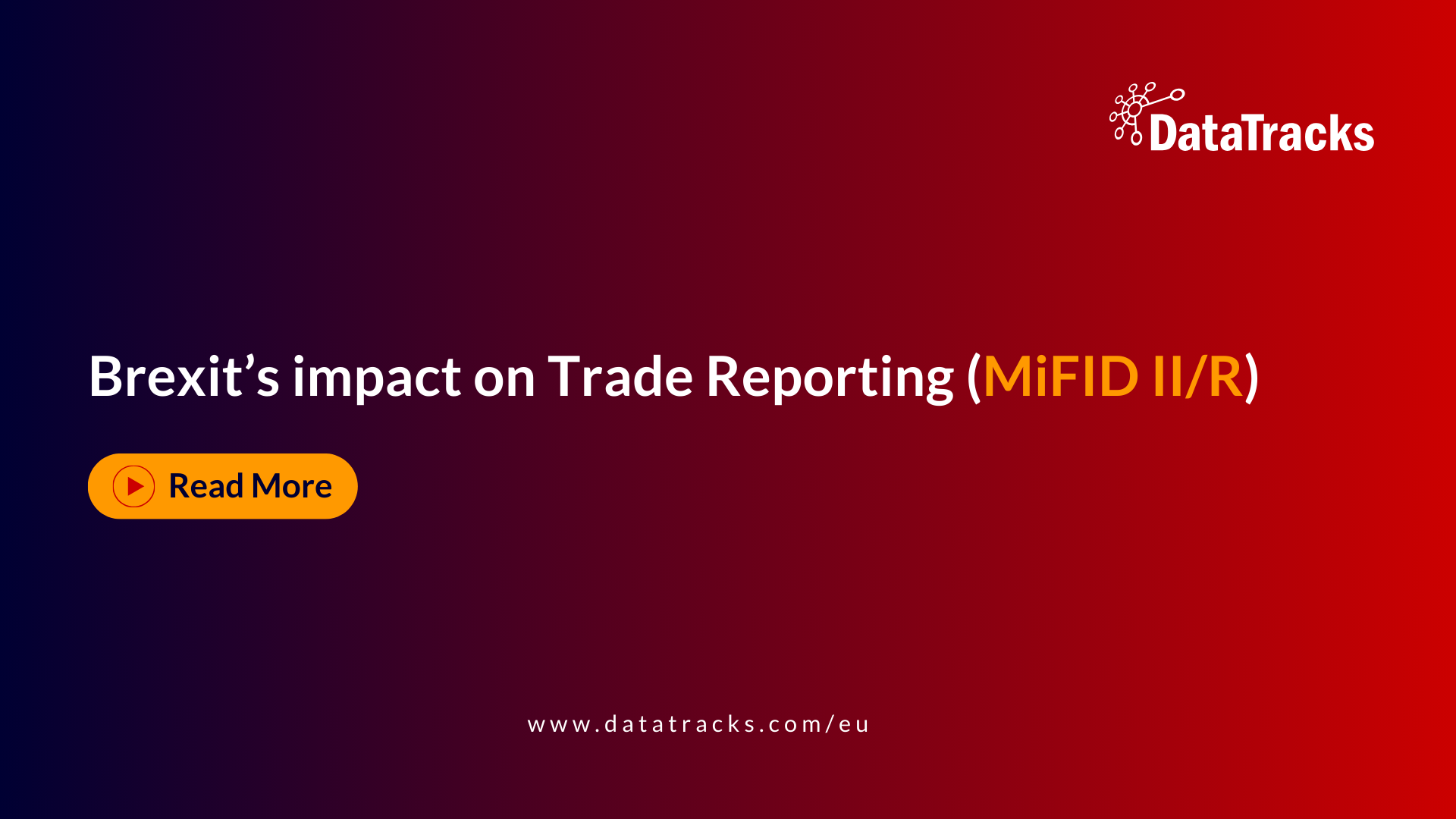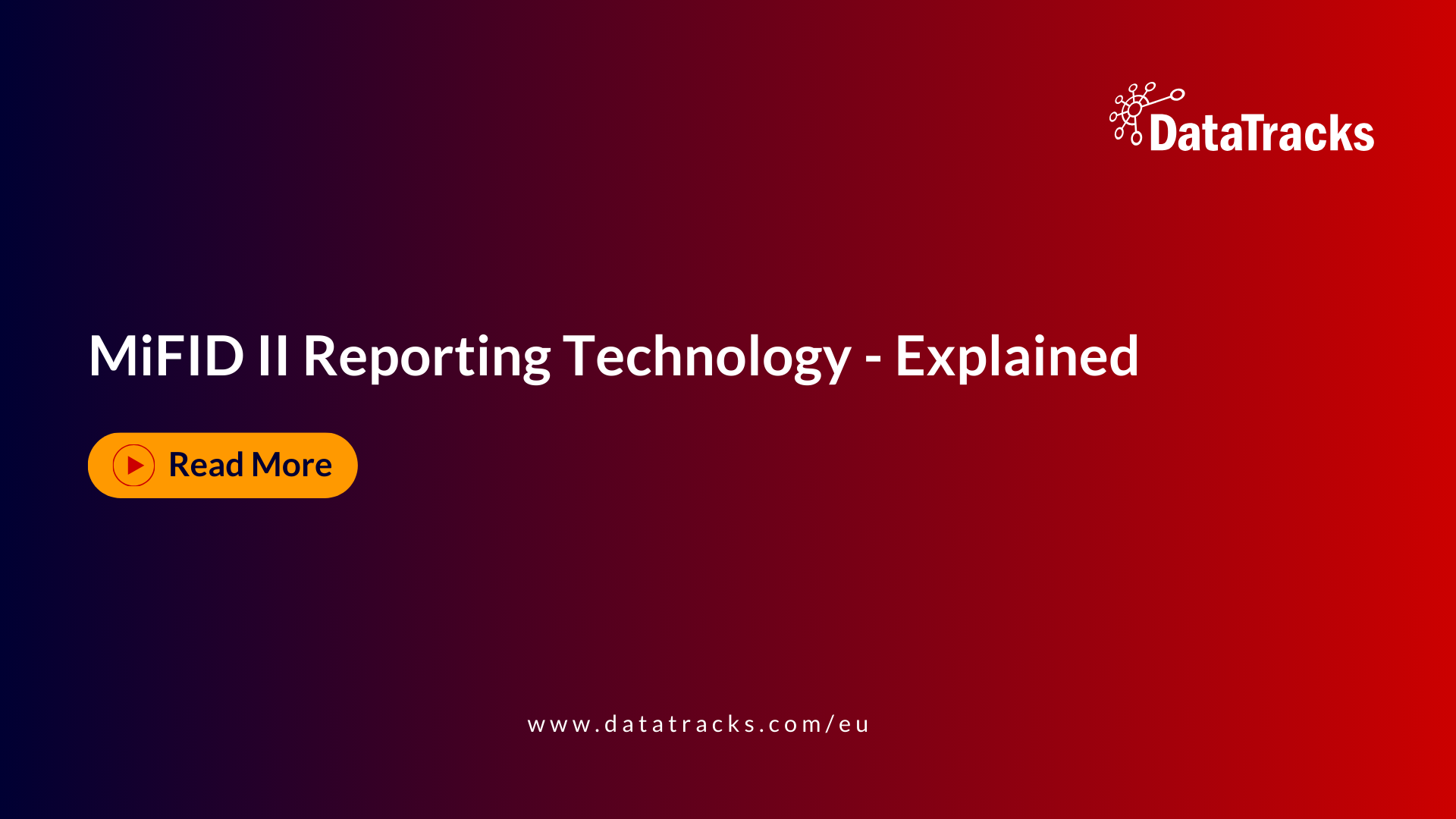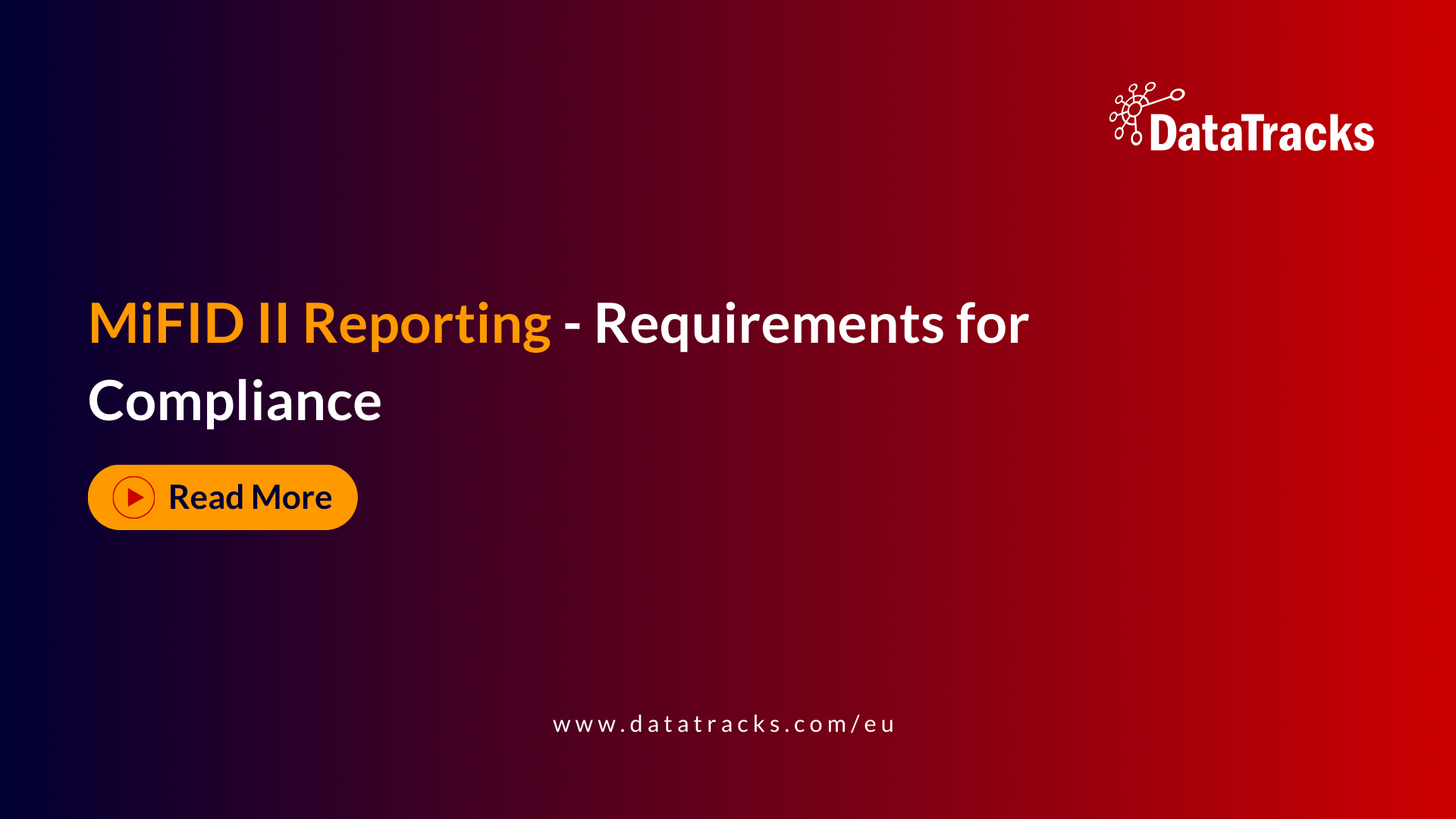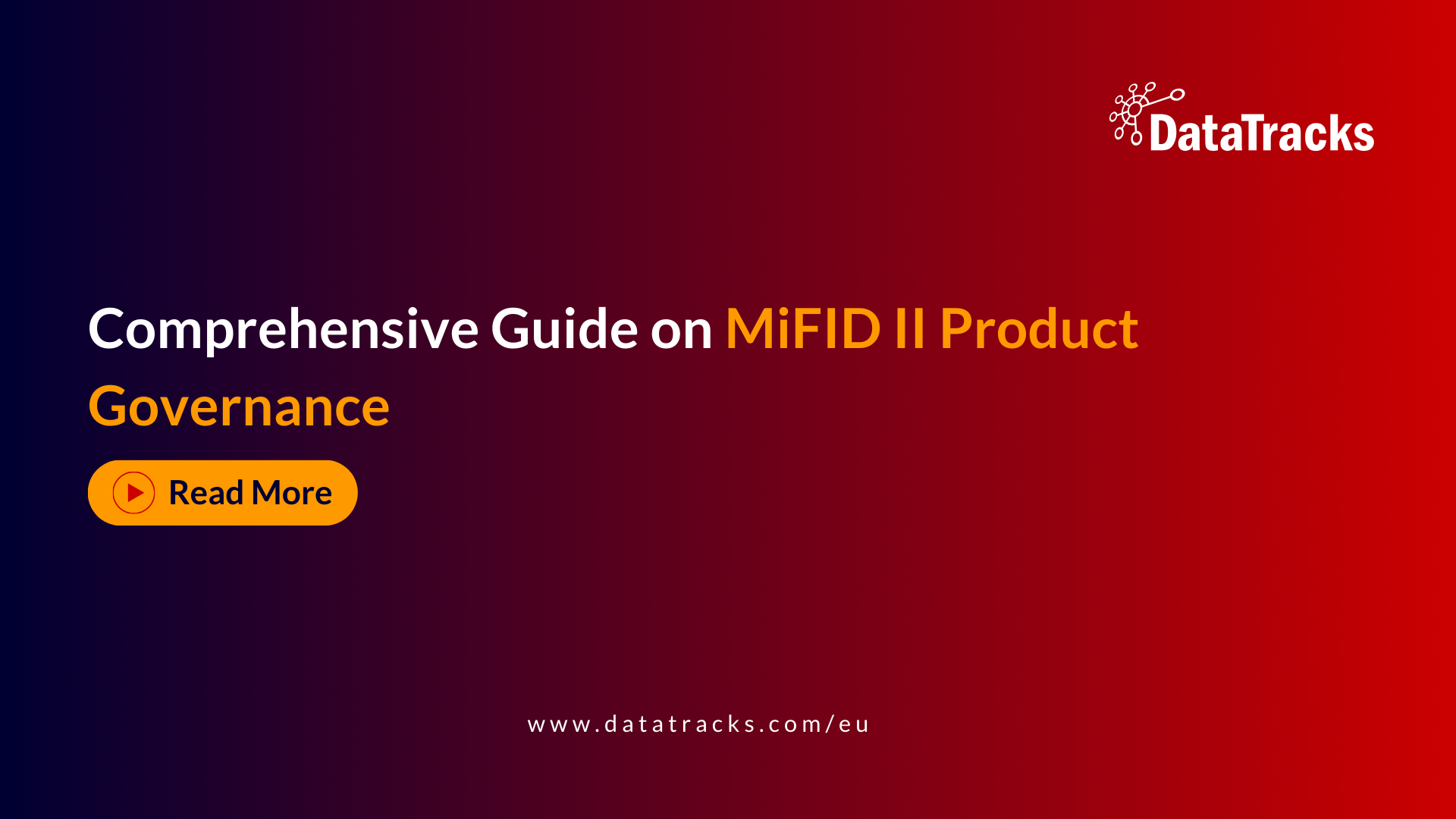MiFIR Transaction Reporting: PART 2
The new Markets in Financial Instruments Regulation (2014/600/EU) (MiFIR) is set to introduce a new and highly comprehensive, complex, and onerous regulatory reporting framework throughout the European Union (EU) for financial services firms in January 2018. In this four part series of blogs we aim to identify the complexities and challenges that the new MiFIR transaction reporting will introduce. In PART 1 we will set out an overview of the transaction reporting framework. In PART 2 we will set out the detailed operational requirements for firms. In PART 3 we will set out the challenges and complexities of MiFIR transaction reporting, and in PART 4 we will set out the reasons why firms should delegate their MiFIR reporting obligations.
An Overview of MiFIR Operational Requirements
The Markets in Financial Instruments Regulation (MiFIR) is a key part of the European Union’s financial regulatory framework aimed at increasing transparency and improving the functioning of financial markets. A critical aspect of MiFIR is its transaction reporting obligations, which require investment firms to report detailed information about their trades to ensure market integrity and investor protection.
Broad Definition of Financial Instruments
MiFID II and MiFIR encompass almost all financial instruments, including cash equities, bonds, indexes, and equity derivatives.
Reporting Framework
Investment firms must provide highly detailed data for 65 data fields and report transactions to National Competent Authorities (NCAs) by the end of the next working day.
Responsibility for Reporting
Under MiFIR, firms are responsible for the completeness, accuracy, and timeliness of transaction reports. When reporting via an Approved Reporting Mechanism (ARM), firms transfer this responsibility but must still verify the accuracy and timeliness of the reports.
Responsibilities of Investment Firms
Under MiFIR, investment firms are responsible for ensuring that their transaction reports are complete, accurate, and timely. Even when using ARMs, firms must take reasonable steps to verify the correctness of the submitted reports. This involves regular audits and checks to ensure compliance with MiFIR’s stringent requirements.
Required Data for Transaction Reports
Transaction reports submitted to NCAs must include a broad range of data from various internal and external sources:
- Buyer Identification: Includes ID code, branch country, first name, surname, and date of birth.
- Buyer Decision Maker: Requires ID code, first name, surname, and date of birth.
- Transmission Details: Covers transmission of order indicator and transmitting firm ID codes for both buyer and seller.
- Transaction Details: Encompasses trading date, time, capacity, quantity, price, price currency, net amount, and venue.
- Investment Decision Maker and Executor: Details the investment decision and execution within the firm.
- General Fields: Includes report status and transaction reference number.
- Seller Identification: Requires seller ID code.
- Seller Decision Maker: Includes seller decision maker code.
- Instrument Details: Covers instrument ID code, classification, and notional currency.
- Flags: Indicators for waiver, short selling, OTC post-trade, commodity derivatives, and securities financing transactions.
By adhering to these detailed reporting requirements, investment firms can ensure compliance with MiFIR regulations and contribute to a more transparent and well-regulated financial market.
Challenges and Compliance Tips
Firms face several challenges in meeting MiFIR reporting obligations, including the complexity of data collection, the need for precise data management, and the coordination between different reporting systems. To ensure compliance:
- Use specialized software: Invest in robust reporting tools to manage data efficiently.
- Regular audits: Conduct frequent internal audits to verify data accuracy.
- Training and updates: Keep staff informed and trained on the latest regulatory changes and reporting requirements.
Consequences of Non-Compliance
Failure to comply with MiFIR transaction reporting requirements can result in significant penalties and regulatory actions. These can include fines, restrictions on business activities, and reputational damage. Ensuring compliance is crucial for maintaining market integrity and protecting investors.
MiFIR transaction reporting obligations are comprehensive and require meticulous attention to detail. By understanding the requirements and implementing robust reporting processes, investment firms can ensure compliance, contributing to a transparent and well-regulated financial market.
The sheer breadth of data required to be submitted via transaction reports is likely to prove highly challenging for investment firms in practice. Indeed, the United Kingdom’s Financial Conduct Authority (FCA) has already questioned firms’ ability to meet these new and highly onerous transaction reporting obligations in its Market Watch 50. It noted that not only were firms submitting transaction reports late, but that inaccurate transaction reports also impacted the work of other users such as other competent authorities, the Bank of England, the Takeover Panel, and the Prudential Regulatory Authority.
The new MiFIR transaction reporting obligations will clearly require firms to review their existing systems in order to identify whether or not such systems will be able to provide the data needed to populate transaction reports in an accurate and timely manner. Given that firms are required to identify clients, and also identify individuals responsible for execution (i.e. Trader ID) and any computer algorithms responsible for the investment decision (i.e. Algo ID), this may prove to be particularly challenging for firms in practice.
DataTracks offers robust MiFID II reporting solutions that ensure compliance and streamline the reporting process for investment firms. By leveraging DataTracks’ advanced software, firms can efficiently manage the increased data requirements and meet regulatory standards with ease.
If you would like to receive further information about our MiFID II expertise and solutions please email DataTracks at: enquiry@datatracks.eu.
Frequently Asked Questions (FAQs)
Who needs to report under MiFIR?
Investment firms, trading venues, and Approved Reporting Mechanisms (ARMs) are required to report transactions under MiFIR. This includes any firm that deals in financial instruments covered by MiFIR, ensuring transparency and regulatory oversight of market activities.
What is MiFIR regulation?
MiFIR (Markets in Financial Instruments Regulation) is a European Union regulation designed to increase transparency, improve investor protection, and enhance the functioning of financial markets. It complements MiFID II and sets out requirements for transaction reporting, trade transparency, and the trading of derivatives on regulated markets.
What is the difference between MiFID II and MiFIR?
MiFID II (Markets in Financial Instruments Directive II) is a directive that provides a framework for the regulation of financial markets and investment services within the EU. MiFIR (Markets in Financial Instruments Regulation), on the other hand, is a regulation that directly applies to member states and focuses on enhancing transparency, reporting requirements, and trading of derivatives. While MiFID II requires transposition into national law, MiFIR has direct effect without the need for national legislation.
Who does MiFIR apply to?
MiFIR applies to investment firms, trading venues, and market participants operating within the European Union. It covers a wide range of financial instruments and requires detailed transaction reporting to ensure transparency and market integrity. Firms outside the EU engaging in transactions involving EU financial instruments may also be subject to MiFIR requirements.




